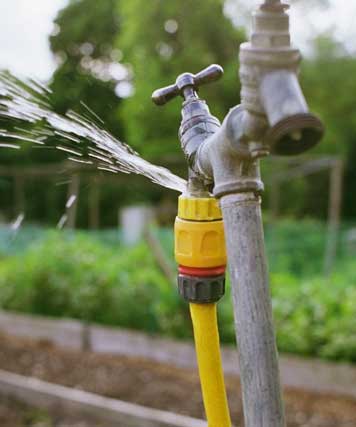Just how do you actually feel in regards to Leaking water lines?

Early detection of leaking water lines can mitigate a potential calamity. Some little water leakages may not be visible.
1. Examine the Water Meter
Every house has a water meter. Examining it is a proven way that aids you find leaks. For beginners, shut off all the water sources. Make certain nobody will purge, use the tap, shower, run the washing equipment or dishwasher. From there, most likely to the meter and watch if it will transform. Considering that no person is using it, there need to be no movements. That suggests a fast-moving leak if it moves. Furthermore, if you spot no changes, wait an hour or 2 and also check back again. This suggests you might have a slow-moving leakage that can also be below ground.
2. Check Water Consumption
If you identify abrupt changes, in spite of your usage being the very same, it means that you have leaks in your plumbing system. An unexpected spike in your expense suggests a fast-moving leakage.
At the same time, a stable increase each month, despite having the exact same routines, reveals you have a sluggish leak that's also slowly rising. Call a plumber to completely examine your home, especially if you really feel a warm location on your floor with piping beneath.
3. Do a Food Coloring Test
When it comes to water intake, 30% comes from bathrooms. Examination to see if they are running properly. Decrease flecks of food shade in the tank as well as wait 10 mins. If the color in some way infiltrates your dish throughout that time without flushing, there's a leak between the tank as well as bowl.
4. Asses Exterior Lines
Don't forget to inspect your outside water lines also. Should water leak out of the link, you have a loose rubber gasket. One tiny leakage can waste tons of water and increase your water costs.
5. Examine and Assess the Circumstance
Home owners ought to make it a practice to examine under the sink counters as well as even inside cabinets for any kind of bad odor or mold development. These 2 red flags show a leak so prompt interest is needed. Doing regular assessments, also bi-annually, can save you from a significant problem.
Much more importantly, if you know your home is already old, maintain a watchful eye on your heating systems, pipes, pipes etc. Look for discolorations and also compromising as the majority of pipelines and also devices have a life expectancy. They will certainly likewise naturally weaken as a result of damage. If you presume leaking water lines in your plumbing system, don't wait for it to intensify. Call a specialist plumber as soon as possible so you do not end up with a dreadful mess in your house.
Early discovery of leaking water lines can reduce a possible catastrophe. Some small water leaks may not be visible. Checking it is a surefire way that helps you uncover leakages. One tiny leak can lose bunches of water as well as spike your water costs.
If you believe dripping water lines in your plumbing system, don't wait for it to intensify.
WARNING SIGNS OF WATER LEAKAGE BEHIND THE WALL
PERSISTENT MUSTY ODORS
As water slowly drips from a leaky pipe inside the wall, flooring and sheetrock stay damp and develop an odor similar to wet cardboard. It generates a musty smell that can help you find hidden leaks.
MOLD IN UNUSUAL AREAS
Mold usually grows in wet areas like kitchens, baths and laundry rooms. If you spot the stuff on walls or baseboards in other rooms of the house, it’s a good indicator of undetected water leaks.
STAINS THAT GROW
When mold thrives around a leaky pipe, it sometimes takes hold on the inside surface of the affected wall. A growing stain on otherwise clean sheetrock is often your sign of a hidden plumbing problem.
PEELING OR BUBBLING WALLPAPER / PAINT
This clue is easy to miss in rooms that don’t get much use. When you see wallpaper separating along seams or paint bubbling or flaking off the wall, blame sheetrock that stays wet because of an undetected leak.
BUCKLED CEILINGS AND STAINED FLOORS
If ceilings or floors in bathrooms, kitchens or laundry areas develop structural problems, don’t rule out constant damp inside the walls. Wet sheetrock can affect adjacent framing, flooring and ceilings.
https://www.servicemasterbyzaba.com/blog/how-to-detect-water-leakage-in-walls/

As an enthusiastic person who reads about Top leak detection hacks, I was thinking sharing that editorial was important. Sharing is nice. Helping people is fun. Thanks a bunch for your time. Please come by our site back soon.